This past week has been an eye opener! After ten months of working in Malawi, I’ve FINALLY had an opportunity to spend extended time in the field. I am leading one of seven teams that are venturing across the country visiting all of the HIV/AIDS facilities as part of the 2007 Situational Analysis. Ultimately, we are collecting data from HIV Counseling and Testing sites, Antenatal Clinics and Maternity Wards that are implementing PMTCT (Prevention of Mother to Child Transmission) programs, STI clinics, pharmacy/labs, TB Clinics and blood donor facilities.

(Mothers waiting at the ANC Ward – Mkoma Health Center)
This is an enormous undertaking – to put things into perspective, each team is visiting approximately ten sites per week for eight weeks – that’s 560 different facilities! And depending on how many services are available, one can spend anywhere from 2 – 8 hours at a site!
On our first day, we traveled from Lilongwe to Mzuzu (approximately 4 hours North) and continued on to Mzimba District Hospital. There we met Raymond, the District Health Officer, who assisted us with introductions at the different wards within the hospital. We spent seven hours going through registers, verifying data (e.g. manually aggregating monthly totals for testing and counseling and tallying booking visits and deliveries at ANC and maternity wards), reviewing stocks of drugs within the pharmacy, interviewing staff, and finally assessing standard practices related to HIV. For example, how persons within the health facility denote a patient’s HIV status in their health passport; whether or not condoms are consistently available and dispensed; and whether or not blood donors are counseled if their blood is rejected due to HIV, Syphilis, or Hepatitis, to name a few.
STIs have no standard health register. As such, data coming from clinics treating STI’s are of extremely poor quality. Not to mention, they are not conducting HIV testing in any STI clinic, nor are they tracking anything related to HIV. One outcome of this situational analysis may center around policy decisions linking STI’s to HIV.
Another interesting finding relates to how HIV is encrypted in a person’s health passport. The answers have been incredibly varied, ranging from R for Reactive and NR for Non-Reactive to a coding system of 1-5 for positive and 6-10 as negative. Yet these coding systems aren’t standardized! For instance, another clinic not too far away from the first were coding HIV as 1 – 5 for negative and 6 – 10 as positive. In short, each facility has its own ‘code’ or system of marking people’s status in their health passport – which may create problems when transferring patients from one facility to another!
Yesterday, we traveled for three hours to reach one clinic – Euthini Health Center. I can’t begin to express how much I love driving to the rural clinics. Each day is a different adventure as we veer off the main road and begin our journey for endless hours down the dirt roads, winding through tiny villages – one after another – until we reach our final destination. The verdant rolling hills are simply stunning and beautiful Malawians, with heavy loads piled on their heads, dot the side of the road.
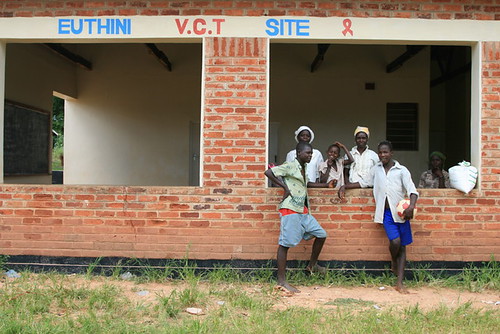
(Euthini HIV Counseling Center)
Interestingly enough, as we were driving I noticed a man face down, body contorted in a ditch on the side of the road. I asked the driver to pull over – because he looked hurt (the position of his body led me to believe that he had been hit by a car). However, the driver said, “no, we can’t stop – he’s probably drunkâ€. And I replied, he doesn’t look drunk – he looks hurt! He quickly responded – ‘even more reason NOT to stop’. As it turns out, often times people who pull over to help persons in distress are often falsely accused of the injury/accident. This scenario truly saddened me – I wondered how many people just drove by and ignored this poor man. I would like to believe that he was just drunk…and that as soon as he sobers he will walk away from that ditch.
The scenery in the North is absolutely stunning! It’s been so peaceful driving to the rural clinics. Farmers are harvesting tobacco – so the roads are paved with makeshift drying shacks – with tobacco even drying underneath the awnings of shops and homes.
On the way to Katete and Jenda Health Centers, I stopped to take a picture of the tobacco and happened upon this beautiful family.
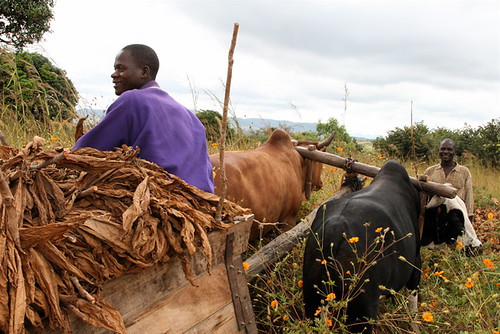
(Tobacco farmer bringing in his crop)
And today I witnessed my first case of Elephantiasis – such a freaky disease!
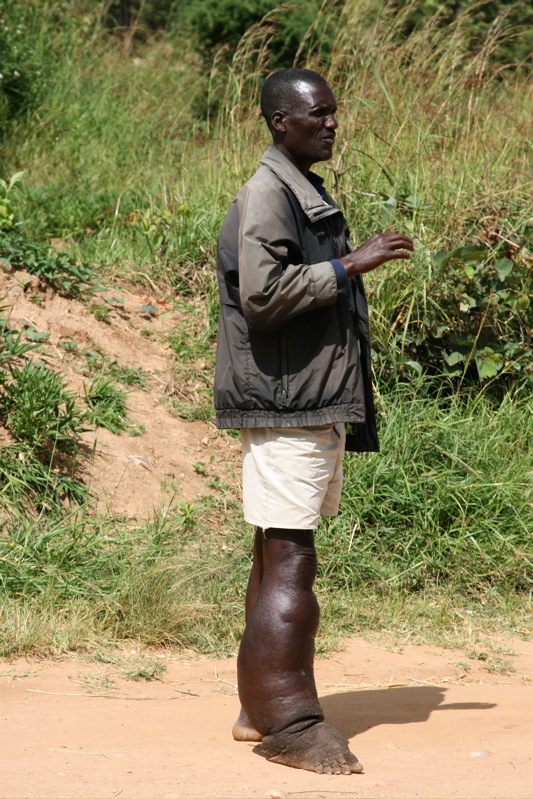
(Elephantiasis – at Kafukule Health Center)
Anyway, I won’t provide a site-by-site anecdotal account of our Situational Analysis, yet I will provide some generalities. Everyone at the HIV facilities has been incredibly friendly, from the Nurses and Midwifes to the HIV Counselors and Medical Assistants. The Mission-run hospitals are quite nice and impeccably clean. However, they do not distribute condoms – a critical link for prevention efforts.
And the following image is of a man working at Chikawanga Health Center – he was cooking lunch outdoors on an open fire.
Finally, as an M&E Officer, this has been an incredible experience — to see first hand how things are operationalized in the field. Below is my partner in this endeavor, Chimwemwe. Please note, this process is not exactly exhilarating.
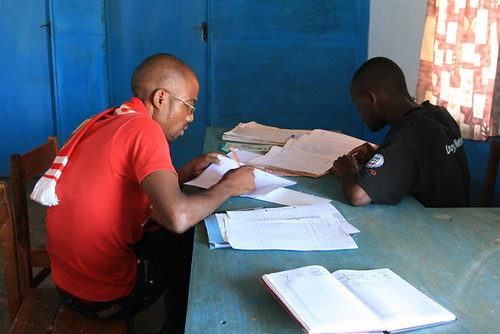
(Chimewemwe at Jenda Tovwarine)
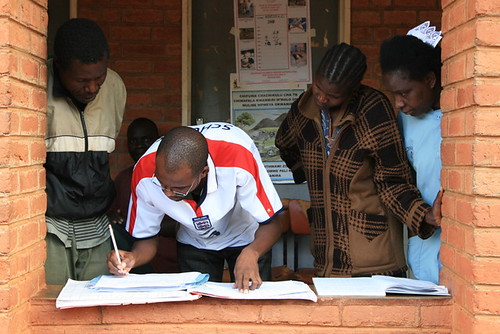
(Chimwemwe at Khosolo Health Center)
Much love,
Amy
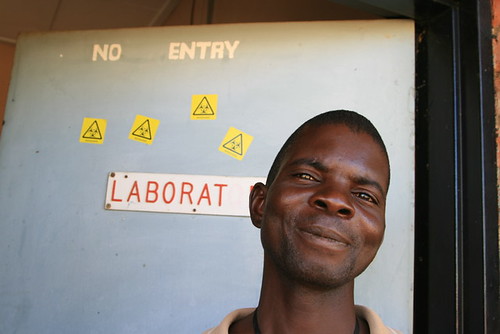
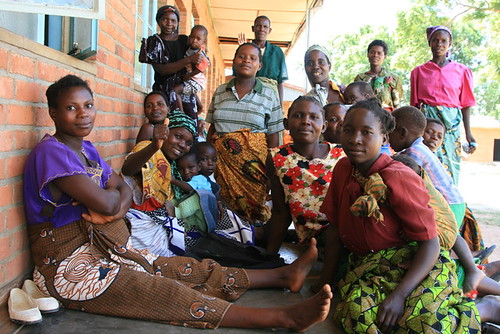
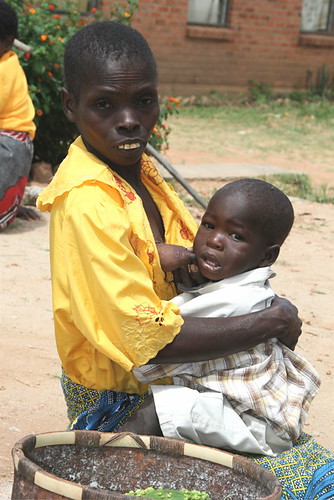
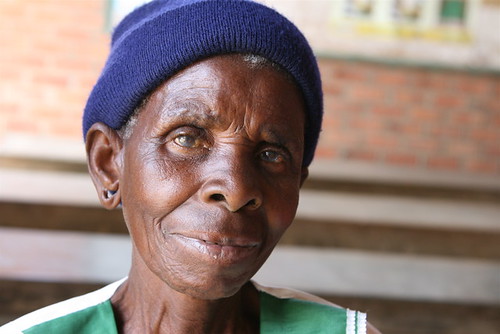

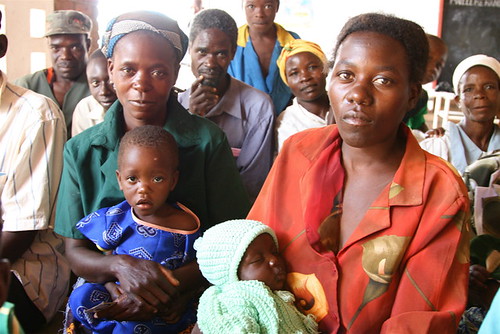
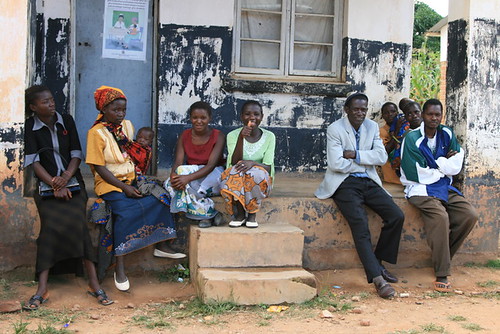
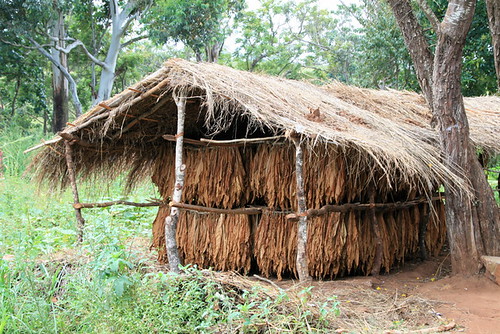
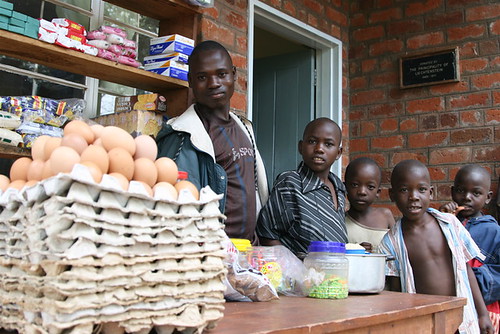


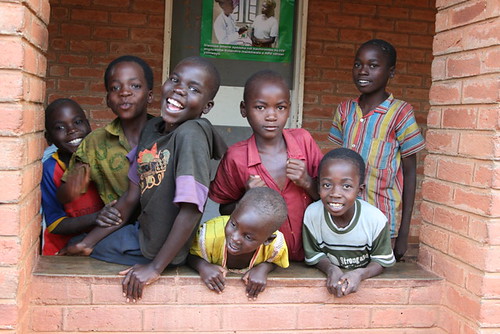
those are excellent photos, dont change them!
Loved hearing from you! I have been ill. Will write more when I feel better.